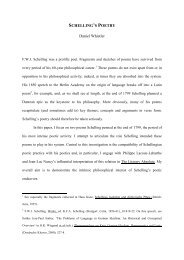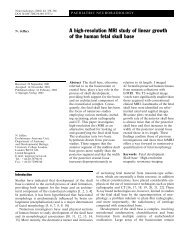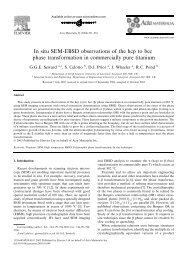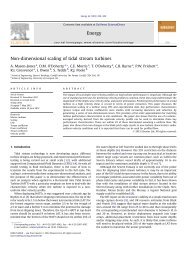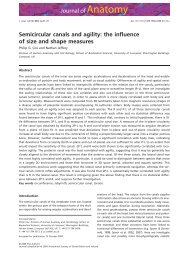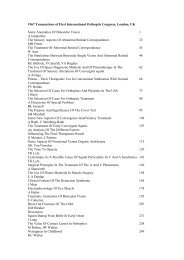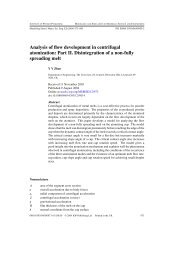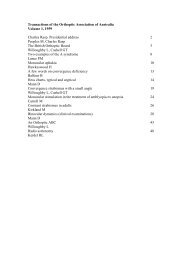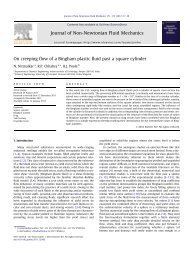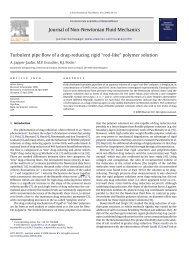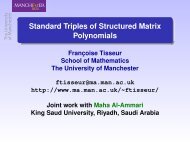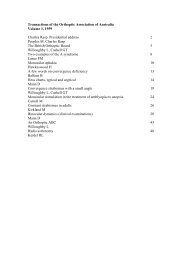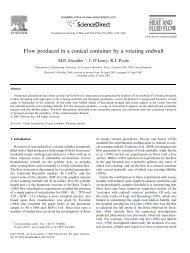The Discipline of Pious Reason: Goethe, Herder, Kant Daniel ...
The Discipline of Pious Reason: Goethe, Herder, Kant Daniel ...
The Discipline of Pious Reason: Goethe, Herder, Kant Daniel ...
You also want an ePaper? Increase the reach of your titles
YUMPU automatically turns print PDFs into web optimized ePapers that Google loves.
Nevertheless, the silence <strong>of</strong> contemporary philosophy <strong>of</strong> religion on piety is quite<br />
deafening. Piety seems to elude the critical gaze. It is for such reasons that I will<br />
speak at the end <strong>of</strong> the essay <strong>of</strong> the anti-transcendental nature <strong>of</strong> contemporary<br />
philosophy <strong>of</strong> religion; it has suppressed the conditions which made it possible. <strong>The</strong><br />
obvious question is therefore: What reasons can be given for philosophy <strong>of</strong> religion’s<br />
suppression <strong>of</strong> the conditions <strong>of</strong> its own possibility? This question structures the<br />
present essay. I ask how and why piety ‘became invisible’ and I do so by describing<br />
three ‘scenes’ from the history <strong>of</strong> ideas which take place at the intersection between<br />
philosophy <strong>of</strong> religion and moral philosophy: two early poems by <strong>Goethe</strong> (Ganymed<br />
and Prometheus) a short essay by <strong>Herder</strong> (Liebe und Selbstheit) and the closing<br />
sections <strong>of</strong> <strong>Kant</strong>’s Metaphysik der Sitten. All three dramatise the effacement <strong>of</strong> piety<br />
from philosophy <strong>of</strong> religion.<br />
In these ‘scenes’, <strong>Goethe</strong>, <strong>Herder</strong> and <strong>Kant</strong> confront the dominant pieties <strong>of</strong> their day<br />
and stutteringly articulate alternative, <strong>of</strong>ten improper models for relating to what<br />
matters most (i.e. ‘God’). All three are uneasy over how piety is usually conceived, so<br />
try to conceive it differently. <strong>The</strong> piety being challenged was essentially neoplatonic<br />
and itself had only recently come to dominance as a by-product <strong>of</strong> the Platorenaissance<br />
in post-1750 Germany. This neoplatonic piety was tethered to the figure<br />
<strong>of</strong> the One and postulated a future fusion with the divine. <strong>The</strong> impiety <strong>of</strong> <strong>Goethe</strong>,<br />
<strong>Herder</strong> and <strong>Kant</strong> focused, on the contrary, on the multiplicity <strong>of</strong> existence. This<br />
concern for multiplicity was <strong>of</strong>ten mediated (oddly enough) through Spinozist ethics.<br />
Neo-Spinozistic impiety designated the manner in which the individual relates to God<br />
as individual, released from the bonds <strong>of</strong> fusion, mysticism and apotheosis. Impieties<br />
<strong>of</strong> the multiple were pitted against pieties <strong>of</strong> the One.



